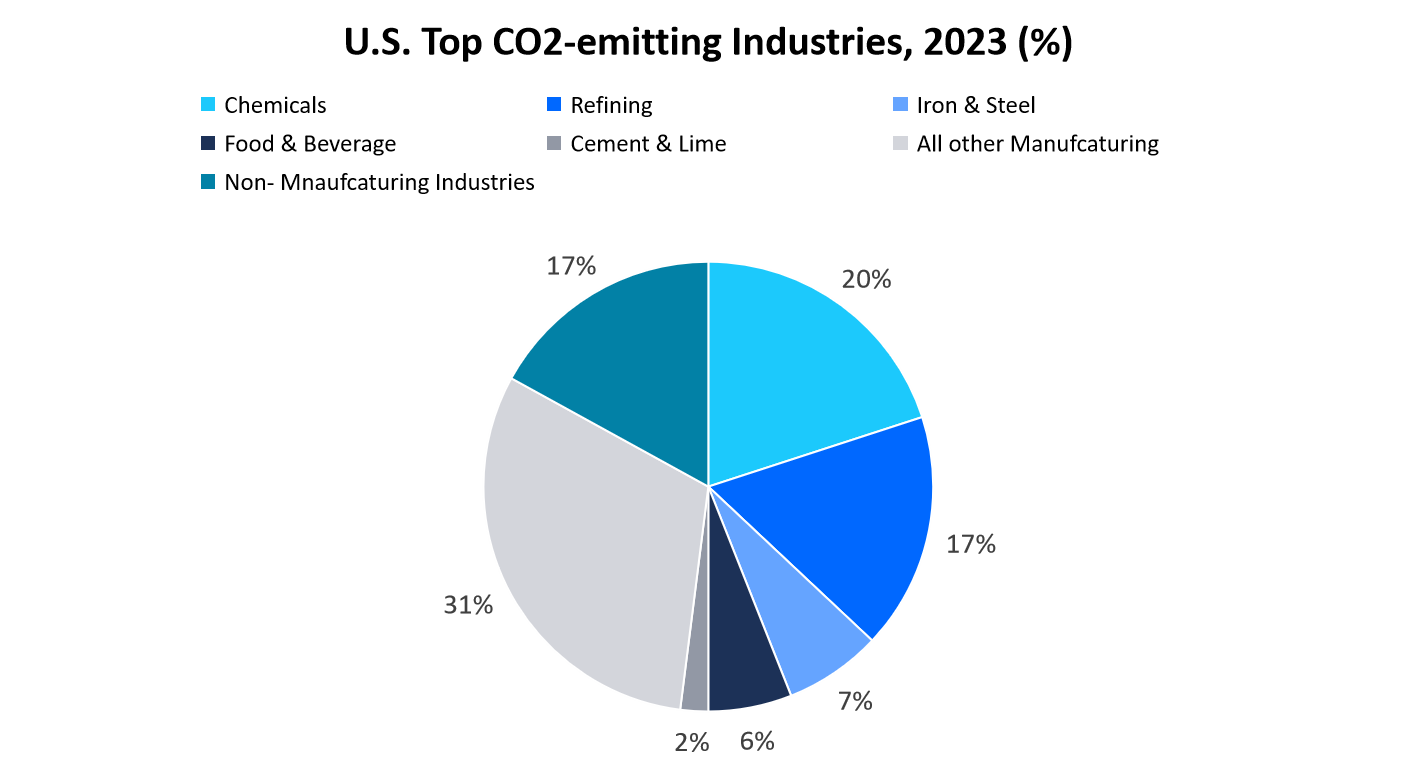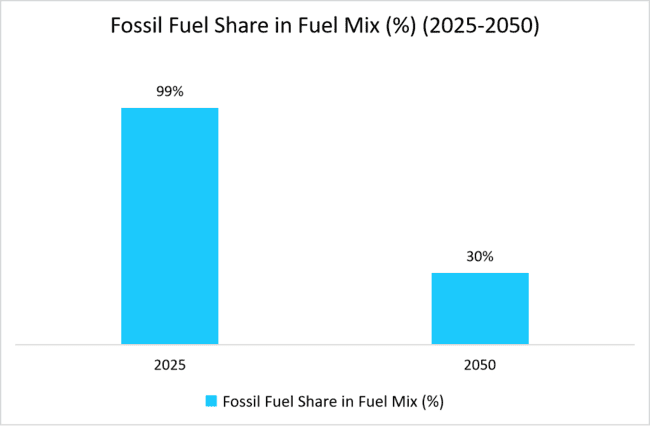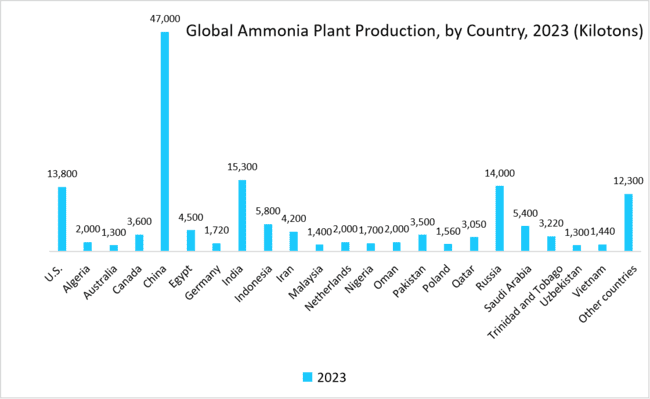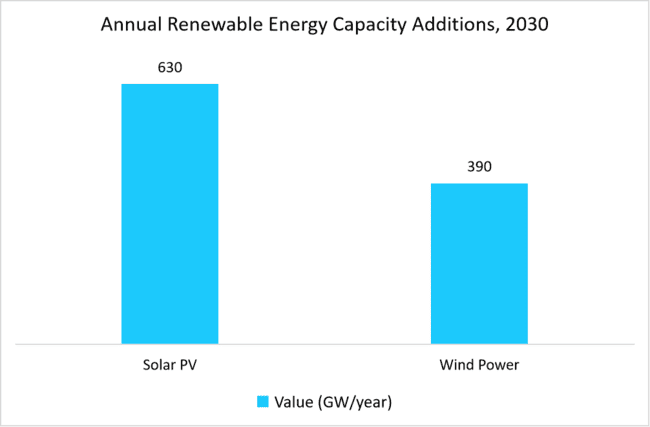Ammonia Market Size
The global ammonia market size was valued at USD 160.14 billion in 2024 and is projected to grow from USD 171.66 billion in 2025 to USD 308.71 billion by 2033, exhibiting a CAGR of 7.6% during the forecast period (2025-2033).
Ammonia plays a crucial role in agriculture as a key component of nitrogen-based fertilizers, essential for enhancing crop yields and the global food processing industry. Ammonia is also used in producing AdBlue for vehicle NOx control and in the pharmaceutical, textile, and explosives industries. According to gross estimations, approximately 2/3 of consumed natural gas is used as a feedstock, while around 1/3 is used for energy purposes. Natural gas is the key cost driver for the ammonia industry in Europe, making up approximately 70-85% of the production costs.
Although ammonia is not a greenhouse gas, following deposition to soil, it may be converted to nitrous oxide, an important contributor to the radiative forcing of climate. It converts nitrogen from the air into ammonia using hydrogen derived from natural gas or other fossil fuels. As concerns regarding climate change and greenhouse gas emissions escalate, there is growing interest in exploring sustainable production methods such as green and blue ammonia, which utilize renewable energy sources or capture and store carbon emissions.
Asia Pacific is anticipated to continue its dominance over the forecast period due to growing foreign investments in the developing economies of China and India. In addition, as per Ammonia Energy Association, China is the largest ammonia producer globally, and the country accounts for almost 32% of total global demand. Ammonia is produced from fossil gas in most countries, but this is not abundant in China. Thus, about 85% of China’s annual ammonia production is based on coal. The carbon intensity of coal-based ammonia production is substantial, with at least 3.5-4.5 tons of CO2 equivalents emitted per ton ammonia.
Table 1: Global Ammonia Production by Region, 2020-2024 (Kilotons)
| By Region | 2020 | 2021 | 2022 | 2023 | 2024 |
|---|---|---|---|---|---|
| North America | 20,683.0 | 19,729.8 | 21,105.2 | 20,766.8 | 21,864.9 |
| Europe | 15,172.1 | 14,382.2 | 10,789.2 | 11,157.1 | 12,523.1 |
| Asia Pacific | 15,324.0 | 16,013.3 | 13,262.3 | 13,847.0 | 14,213.6 |
| LATIN AMERICA | 1,09,159.7 | 1,13,271.1 | 1,18,914.4 | 1,21,749.9 | 1,23,108.3 |
| MEA | 6,083.2 | 6,442.9 | 6,988.0 | 6,862.0 | 6,988.0 |
| CIS | 8,879.1 | 10,194.9 | 10,955.5 | 11,636.2 | 12,044.0 |
| Total | 1,75,301.1 | 1,80,034.3 | 1,82,014.6 | 1,86,019.0 | 1,90,742.0 |
Source: Straits Research, International Fertilizer Association, Ammonia Energy Association
As per U.S. Department of Energy, the Industrial Decarbonization Roadmap focuses on five of the highest CO2-emitting industries (petroleum refining, chemicals, iron and steel, cement, and food and beverage) where industrial decarbonization technologies can have the greatest impact across the nation. These industries represent approximately 51% of energy-related CO2 emissions in the U.S. industrial sector and 15% of U.S. economywide total CO2 emissions.

Latest Market Trends
Ammonia as A Hydrogen Carrier
New applications of ammonia are being explored, including renewable ammonia as a hydrogen carrier for long-range transport. As per International Renewable Energy Agency, the main market growth is expected from the maritime sector, followed by the application of ammonia as a hydrogen carrier, representing a demand of 127 Mt by 2050.
- For instance, Canada’s maritime industry heavily relies on the production of ammonia as a fuel as the cost of ammonia is 32% cheaper than hydrogen and 15% cheaper and more efficient than methanol. The fuel can enter the global market relatively quickly to meet 2050 net-zero emission goals. Projections indicate that ammonia will be the most used zero-emission fuel in the maritime industry by 2050
By scaling up and commercially developing ammonia cracking plants, manufacturers can enable the establishment of global value chains for green hydrogen to use ammonia optimally as an energy carrier.
Decarbonization Policies and Incentives
Government policies, such as the U.S. Inflation Reduction Act and the EU’s Carbon Border Adjustment Mechanism, are pushing the ammonia industry toward low-carbon production methods. Subsidies for carbon capture (blue ammonia) and renewable energy use (green ammonia) are incentivizing producers to adapt, influencing market dynamics and investment patterns.
- For instance, as per U.S. Department of Energy, the Industrial Decarbonization Roadmap focuses on five of the highest CO2-emitting industries (petroleum refining, chemicals, iron and steel, cement, and food and beverage) where industrial decarbonization technologies can have the greatest impact across the nation. These industries represent approximately 51% of energy-related CO2 emissions in the U.S. industrial sector and 15% of U.S. economywide total CO2 emissions
As per Ammonia Energy Association, the future markets for ammonia as a zero-carbon fuel and hydrogen carrier will help spur the development of newbuild, flexible, renewable ammonia plants.

Source: World Economic Forum

To get more insights about this report Download Free Sample Report
Ammonia Market Growth Factors
Production of Decarbonized Ammonia
The U.S. government is promoting the production of decarbonized ammonia by funding the manufacturers, which will further lead to advancement in ammonia production projects:
- For instance, as per stated by Ammonia Energy Association in January 2025, GTI Energy, Blue Sky Infrastructure, and Aker Carbon Capture will start a USD 1.5 million pre-FEED study to apply CCS to steam methane reforming (SMR) based ammonia production at the Mosaic Faustina facility in Louisiana
- This mosaic plant is one of North America’s largest ammonia production facilities, with a capacity of 500,000 tons per year. This ammonia is immediately used onsite to produce DAP and MAP fertilisers
Every ton of ammonia produced using grey hydrogen emits around 2-3 tons of direct CO2e. For context, this is almost twice as carbon intensive as crude steel and roughly four times that of cement. Moreover, ammonia plants that use coal gasification for hydrogen production have an even higher emission intensity of nearly 4 tons of CO2e per ton of ammonia produced. Overall, ammonia synthesis is the largest CO2 emitter of all chemical industry processes.

Source: US Geological Survey (USGS)
Critical Ingredient in the Production of Nitrogen-Based Fertilizers
Ammonia is indispensable in modern agriculture, serving as a vital component in the production of nitrogen-based fertilizers that are essential for achieving optimal crop yields and enhancing agricultural productivity. Nitrogen is one of the primary nutrients required for plant growth and development, often serving as the limiting factor in agricultural output.
- For instance, India is the second largest consumer of fertilizer and the third largest producer of fertilizer in the world. In India, nitrate fertilizers constitute 75.27% of the total fertilizer production as nitrogen is an important nutrient for plant growth. Additionally, India consumes around 17 to 19 million metric tonnes per annum (MTPA) of ammonia to produce fertilisers such as urea, diammonium phosphate (DAP), and other complex fertilisers (OCFs)
As the world population continues to expand, the demand for food is projected to rise significantly, exerting increased pressure on agricultural systems to enhance yields and productivity.
Restraining Factors
Production is Energy-Intensive and Contributes to Greenhouse Gas Emissions and Soil Degradation
The production of ammonia is energy-intensive, primarily due to the Haber-Bosch process, the predominant method used for synthesizing ammonia on an industrial scale. This process consumes significant energy and emits greenhouse gases such as carbon dioxide (CO2).
- The downside to this technology is the high greenhouse gas emissions, surpassing 2.16 kgCO2-eq/kg NH3, and high amounts of energy usage of over 30 GJ/ton NH3, mainly due to the strict operational conditions at high temperature and pressure.
Alternative nitrogen sources, such as organic compost, biofertilizers, and nitrogen-fixing cover crops, can also help mitigate soil degradation and water pollution associated with ammonia-based fertilizers.
Market Opportunity
Shift towards Sustainable and Renewable Energy Sources (green Ammonia)
Green ammonia, also known as renewable or carbon-neutral ammonia, is produced using renewable energy sources such as wind, solar, or hydroelectric power to generate hydrogen through water electrolysis. Moreover, green ammonia aligns with global efforts to combat climate change and reduce greenhouse gas emissions.
- For instance, in November 2024, China's Huading New Energy Co. Ltd (HDsolar) has signed a memorandum of understanding with Jordan's Ministry of Energy to study a green hydrogen project aimed at producing 400,000 tonnes of green ammonia annually
In the sustainable development scenario, the sector adopts the technologies and policies required to put it on a pathway aligned with the goals of the Paris Agreement. The Net Zero Emissions by 2050 Scenario describes a trajectory for the ammonia industry that is compatible with the energy system, reaching net zero emissions globally by 2050.

Source: International Energy Agency (IEA)
regional Insights
Asia Pacific: Dominant Region with 60.49% Market Share
Asia-Pacific is the largest and fastest-growing ammonia market, driven by the increasing population and rising food demand in countries like China and India. According to reports from organizations such as the Food and Agriculture Organization (FAO) and the International Fertilizer Association (IFA), Asia Pacific accounts for a substantial share of global fertilizer consumption, underscoring the pivotal role of ammonia in sustaining agricultural productivity and food security initiatives. China, which is the world's largest ammonia producer, supplies more than 25% of the world market.
- For instance, China has accelerated permitting and state funding for projects along with the upcoming increases in the Chinese Emission Trading System to make new coal-based ammonia capacity economically unviable.
North America: Fastest Growing Region with the Highest Market Growth Rate
The North American region is a significant player in the global ammonia market, where the United States emerges as the dominant producer and consumer. The U.S. is one of the top importers of ammonia owing to its usage in agriculture and allied activities. The US produces a large amount of ammonia itself (the third largest) and imports a large amount of ammonia. The Republic of Trinidad and Tobago is the largest U.S. trade partner in ammonia, followed by Canada, and these two countries account for the majority of U.S. imports. Natural gas-based plants are the main source of ammonia production in the U.S., accounting for approximately 92% of the country’s ammonia production. Approximately 60% of the total ammonia production capacity in the United States is located in Louisiana, Oklahoma, and Texas, primarily due to their abundant natural gas reserves, which serve as the main domestic feedstock for ammonia production.
Countries Insights
The Ammonia market is experiencing dynamic growth and diversification across the globe, with each country contributing uniquely to the advancement of this transformative field.
- U.S.- The U.S. government is promoting the production of decarbonized ammonia by funding the manufacturers, which will further lead to advancement in ammonia production projects. For instance, as per stated by Ammonia Energy Association in January 2025, GTI Energy, Blue Sky Infrastructure, and Aker Carbon Capture will start a USD 1.5 million pre-FEED study to apply CCS to steam methane reforming (SMR) based ammonia production at the Mosaic Faustina facility in Louisiana
- Canada– Canada is also investing in large-scale liquified natural gas (LNG) infrastructure. These capacities, such as seaports and liquefaction facilities, can be adapted towards the transportation of ammonia for use in the hydrogen economy. With 13 LNG export terminal projects on the west coast (British Columbia) and five on the east coast (2 in Quebec and 3 in Nova Scotia), Canada will have large-scale ammonia-ready infrastructure to fuel the global economy
- Japan– Japan is one of the few countries in the world that is actively promoting the use of ammonia as a co-firing fuel alongside coal for power generation, to decarbonize the electricity sector. For instance, The Ministry of Economy, Trade and Industry strategizes to decarbonise the power generation ecosystem in the Chugoku region, Japan. At 20% co-firing, the strategy estimates that, by 2030, the region will require about 3.21 million tons of ammonia and 270,000 tons of hydrogen per year
- China- According to the Ammonia Energy Association, China is expected to account for 55% of the installed 45 GW of renewable hydrogen production capacity by 2028. Assuming around 2-3 GW of renewable generation capacity per million tons of renewable ammonia production, this could lead to 4-6 million tons of renewable ammonia production in China by 2028
- India– India is among the world’s largest ammonia producers, representing about 8% of current global production. For instance, a MoU was signed in July 2022 to produce 1.1 million tons per annum of ammonia in Thoothukundi, Tamil Nadu based on 5 GW of solar PV capacity and 1.5 GW of electrolyzer capacity
- Vietnam - The government is currently seeking international investors to develop both green and blue hydrogen for export as well as in-house use. For instance, USD 15 billion of public and private funds have been pledged in the JETP (Just Energy Transition Partnership) to assist Vietnam in transitioning from fossil fuels to clean energy whilst aligning with Vietnam’s ambitious Net Zero 2050 goal
- South Arabia - Saudi Arabia with a total investment of USD 8.4 billion, where the facility will provide for renewable hydrogen and ammonia production valued at USD 6.7 billion. The project, utilizing 4 GW of wind and solar energy, aims to produce over 200,000 tons of renewable hydrogen and 1.2 million tons of renewable ammonia annually by 2026
- Russia – Russia is the world’s second-largest producer of natural gas, following the U.S., and it possesses the largest natural gas reserves according to the International Energy Agency (IEA). This allows Russia to be independent in its natural gas supply. As a result, the first Ammonia Sea Terminal in Russia was launched at the Ust-Luga Port in December 2024. The facility, designed to handle all kinds of fertilisers, has a total production capacity of 14 million metric tonnes and will increase the country’s exports amidst difficulties created by Western sanctions
- Argentina - In 2024, RP Global and German development agency GIZ announced that they will develop a new ammonia mega-project in Argentina. In the first stage of Project Gaucho, 3 GW of electrolysers will be powered by a 4.2 GW wind farm, leading to the production of up to 1.7 million tons of ammonia per year.
ammonia Market Segmentation Analysis
By Type
Liquid segment dominates the market with the highest market revenue. Liquid ammonia is a crucial compound in numerous industrial processes, and this state of ammonia is achieved by cooling gaseous ammonia below its boiling point of -33.34°Celsius at standard atmospheric pressure. It has versatile applications owing to its higher density and liquid state, which help in its easy storage, transportation, and use as a refrigerant in industrial settings because of its high latent heat of vaporization and low boiling point, which are ideal for maintaining low temperatures, thereby making it indispensable in industrial refrigeration.
By End Use
The agriculture segment holds the largest market share among the end-use segments. Ammonia is a critical component and key element in fertilizers. It is known for its high nitrogen content, which is essential for plant growth. Its nitrogen-rich nature promotes healthy crops and enhances plant growth, significantly contributing to agricultural productivity. Ammonia, when put into the soil, gives plants the nutrients they need, especially nitrogen, which is important for plant growth and is frequently a limiting factor in agricultural productivity. Ammonia's ability to bind atmospheric nitrogen and convert it into a usable form for plants through nitrogen fixation is one of its primary benefits in agriculture.
By Sales Channel
Direct channels lead the market by generating the highest revenue among all sales channels. One key aspect of direct selling is the ability to provide in-depth technical expertise and support, which is particularly important in the chemical industry, where products can be complex and require specialized knowledge and technical support. Moreover, direct selling enables manufacturers to have greater control over their brand messaging, pricing strategies, and customer service. By eliminating intermediaries, manufacturers can ensure that their products are represented accurately, and that customer inquiries and concerns are addressed promptly and effectively. Another advantage of direct selling is the potential for higher profit margins. By cutting out the middlemen, manufacturers can retain a larger portion of the revenue from each sale.
Company Market Share
The global ammonia market is moderately consolidated with few of the players including YARA International, CF Industries Holding Inc, SABIC, Mitsui Chemicals, Inc, and OCI Global among others tying to increase their market share by undertaking strategic initiatives including merger, acquisition, new product development, and partnership. Regional companies like IFFCO and Sumitomo Chemical perform well due to their focus on agricultural applications, where fertilizers are critical. The “Others” category includes regional manufacturers and niche players who cater to local markets or specific industries. While the market leans toward consolidation, the presence of numerous smaller producers creates opportunities for competition and innovation, particularly in sustainable ammonia production techniques.
J.R. Simplot Company: An emerging player in the market
The J.R. Simplot Company is one of the global agribusiness manufacturers, with a diverse portfolio spanning agriculture, food production, and technology. Founded in 1929 by J.R. (Jack) Simplot, the company has grown into a privately held, multinational enterprise with operations across North America, Latin America, Asia Pacific, and other global markets. Simplot is also a leading frozen food manufacturer, supplying high-quality frozen potatoes (including French fries), vegetables, and other processed foods to retailers, restaurants, and foodservice operators worldwide. Notably, the company pioneered the first commercially viable frozen French fry, revolutionizing the global food industry.
Recent developments by J.R. Simplot
- In April 2024, R. Simplot's commitment to energy efficiency is evident through prestigious recognitions for its fertilizer plants and potato processing facility, where its two fertilizer plants earned 2023 ENERGY STAR certification, showcasing their energy efficiency. Additionally, the Portage la Prairie Potato Processing Facility received Industry Certification for 2023. Simplot is also a leading frozen food manufacturer, supplying high-quality frozen potatoes (including French fries), vegetables, and other processed foods to retailers, restaurants, and foodservice operators worldwide
List of key players in Ammonia Market
- CF Industries Holdings Inc
- Yara International
- Togliattiazot
- QAFCO
- Koch Industries Inc
- SABIC
- BASF SE
- CSBP Limited
- Asahi Kasei Corp
- EuroChem
- IFFCO
- OCI Global
- Group DF
- Dyno Nobel
- Nutrien
- Mitsui Chemicals, Inc
- R. Simplot Co.
- Sumitomo Chemical

To get more findings about this report Download Market Share
Recent Developments
- In January 2025, Copenhagen Infrastructure Partners (CIP), through its subsidiary Helax, is developing a renewable hydrogen and ammonia plant that is set to come online in 2028. The project aims to develop 3.7GW of renewable energy (1.2GW wind & 2.5GW solar) to power 2.1GW worth of electrolyser units, enabling the production of about 900,000 tons per year of renewable ammonia.
- In November 2024, Swiss marine power company WinGD has secured further orders for its ammonia-fuelled X-DF-A engine design in the growing ammonia carrier market. The engines, to be built at Yuchai Marine Power Co., will be delivered for a total of seven 25,000m3 and 41,000m3 LPG/ammonia carriers ordered by Tianjin Southwest Shipping. The vessels will deploy 5- and 6-cylinder versions of the 52-bore X-DF-A engines and are scheduled to enter service from Q3 2026.
- In November 2024, China's Huading New Energy Co. Ltd (HDsolar) has signed a memorandum of understanding with Jordan's Ministry of Energy to study a green hydrogen project aimed at producing 400,000 tonnes of green ammonia annually.
- In September 2024, Woodside completed the acquisition of 100% of OCI Clean Ammonia Holding B.V., which holds its lower carbon ammonia project in Texas, USD 2.35 billion, which in turn will help the company to cater to a larger market geography, playing an increasingly important role in the world’s energy mix. The potential applications are in power generation, marine fuels, and as an industrial feedstock, as it displaces higher-emitting fuels.
- In June 2024, State-owned Solar Energy Corporation of India (SECI) issued a tender on 7 June 2024 to select eligible suppliers to supply 539,000 t/yr of green ammonia. The ammonia will be supplied to 11 fertilizer facilities in India, owned by eight different fertilizer producers. SECI will sign a Green Ammonia Producers Agreement (Gapa) with the successful suppliers for a period of 10 years based on the terms and conditions of the tender.
- In January 2024, IHI and ACME Group, a leading renewable energy company in India, signed a term sheet for the supply of green ammonia from Odisha, India to Japan. Under this term sheet, IHI considers off-taking up to 400,000 tons of green ammonia from 2028, which will be supplied to various industrial customers located mainly in Japan.
Analyst Opinion
The global market is highly competitive, with a strong focus on green ammonia production. They play a crucial role across various industries, including agriculture, energy, and mobility, and their importance is expected to grow in the coming years. However, traditional production is energy-intensive and a significant contributor to greenhouse gas emissions, prompting a shift toward sustainable alternatives. With increasing concerns over climate change, industry participants are prioritizing production from renewable and environmentally friendly sources. The transition to these sustainable methods could not only reduce emissions but also position ammonia as a key component in global decarbonization efforts, supporting a more sustainable future for industrial and agricultural applications.
Report Scope
| Report Metric | Details |
|---|---|
| Market Size in 2024 | USD 160.14 Billion |
| Market Size in 2025 | USD 171.66 Billion |
| Market Size in 2033 | USD 308.71 Billion |
| CAGR | 7.6% (2025-2033) |
| Base Year for Estimation | 2024 |
| Historical Data | 2021-2023 |
| Forecast Period | 2025-2033 |
| Report Coverage | Revenue Forecast, Competitive Landscape, Growth Factors, Environment & Regulatory Landscape and Trends |
| Segments Covered | By Type, By End Use, By Sales Channel, By Region. |
| Geographies Covered | North America, Europe, APAC, Middle East and Africa, LATAM, |
| Countries Covered | U.S., Canada, U.K., Germany, France, Spain, Italy, Russia, Nordic, Benelux, China, Korea, Japan, India, Australia, Taiwan, South East Asia, UAE, Turkey, Saudi Arabia, South Africa, Egypt, Nigeria, Brazil, Mexico, Argentina, Chile, Colombia, |
Explore more data points, trends and opportunities Download Free Sample Report
Ammonia Market Segmentations
By Type (2021-2033)
- Liquid
- Gas
By End Use (2021-2033)
- Agriculture
- Textile
- Mining
- Pharmaceutical
- Refrigeration
- Others
By Sales Channel (2021-2033)
- Direct
- Distribution
By Region (2021-2033)
- North America
- Europe
- APAC
- Middle East and Africa
- LATAM
Frequently Asked Questions (FAQs)
Anantika Sharma
Research Practice Lead
Anantika Sharma is a research practice lead with 7+ years of experience in the food & beverage and consumer products sectors. She specializes in analyzing market trends, consumer behavior, and product innovation strategies. Anantika's leadership in research ensures actionable insights that enable brands to thrive in competitive markets. Her expertise bridges data analytics with strategic foresight, empowering stakeholders to make informed, growth-oriented decisions.
Speak To AnalystAvailable for purchase with detailed segment data, forecasts, and regional insights.
Get This ReportOur Clients:










































